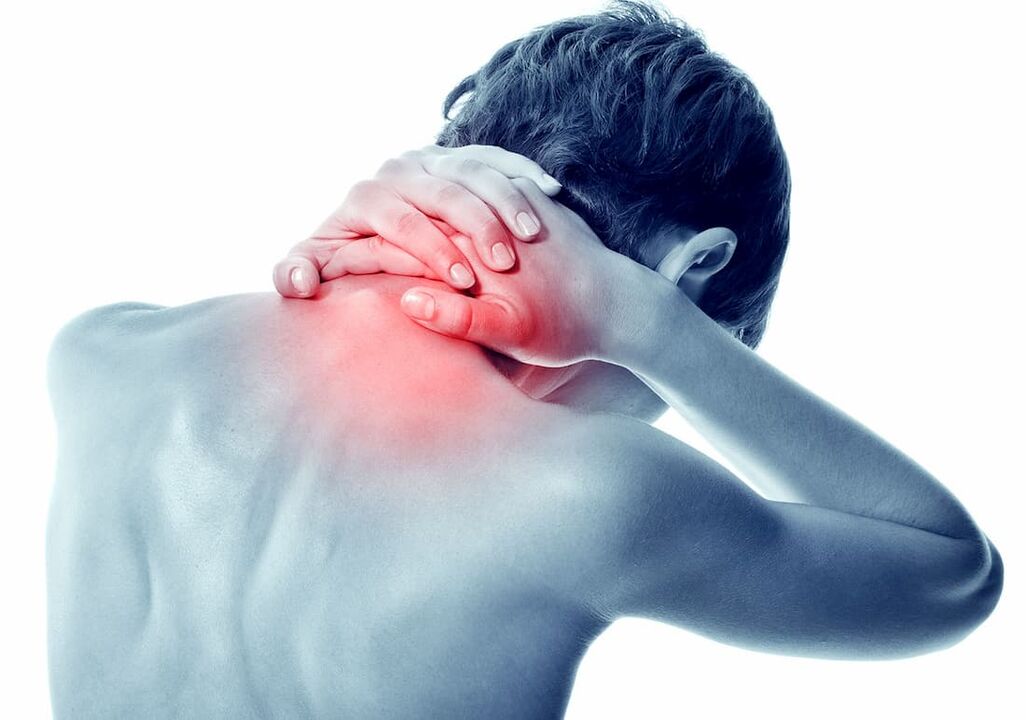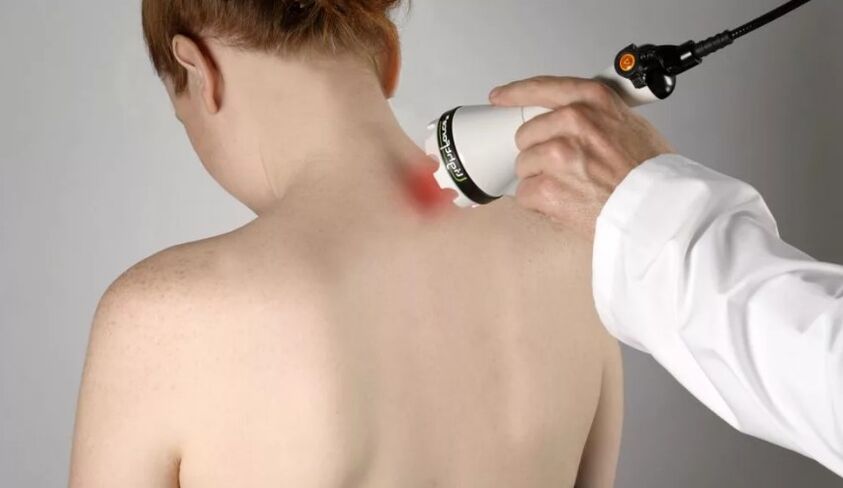
Cervical osteochondrosis is a chronic dystrophic disease in which the discs are thinner between the vertebrae, followed by bone tissue.As the degenerative process advances, the surrounding structures are involved.This becomes the reason for the development of an entire complex of symptoms that completely subjugate the patient's life.
general information
The intervertebral discs consist of a gel -shaped core and a dense fibrous ring around, covered with a layer of cartilage over.They perform a shock absorption function, preventing vertebral damage during running, walking and jumping, and also contributes to the mobility and flexibility of the entire spine of the spine.
In the process of natural aging, as well as in conditions of increased load, there is a gradual decrease in the height of the intervertebral disc.The metabolism at its nucleus is disturbed, the cracks appear in the surrounding fibrous ring.Pratches of Discs - Savement and hernias appear.As the disease advances, cartilaginous tissue and bones are involved, osteophytes occur - bone growth that causes limiting mobility and pronounced pain syndrome.
As pathological changes occur in the immediate vicinity of the spinal cord and its roots, this leads to its compression and inflammation, as well as the reflex development of muscle spasm.As a result, a person experiences characteristic symptoms by which the disease may be suspected.
Reasons
Cervical spine osteochondrosis refers to multifactorial diseases.It arises against the bottom of a whole complex of factors, each of which exacerbates the flow of pathology.The list of reasons includes:
- overweight body weight;
- sedentary lifestyle;
- Sedentary work;
- Inadequate posture;
- Chronic diseases of the musculoskeletal system (scoliosis, flat feet) that contribute to the unequal distribution of the load in the spine;
- Congenital pathologies of the development of the spine of the spine, as well as lesions;
- Excessive and repeated loads in the spine;
- Hereditary predisposition.
Symptoms and Syndromes
Symptoms of cervical osteochondrosis do not appear immediately and are often disguised from other diseases.
The most common signals include:
- Dizziness: As a rule, with osteochondrosis, it is systemic, that is, it seems to a person that surrounding objects rotate before their eyes;
- The back of the neck, neck, collar zone: its intensity depends on the degree of development of the disease;Light and episodic at an early stage, it spreads to the whole head and acquires a constant character;The attacks periodically become unbearable, as a result of which a person can not even move his head;
- Noise or tap the ears: arise when a position changes after a long period of immobility, usually accompanied by dizziness;
- a feeling of shortness of breath, the inability to take a deep breath;In severe cases, a serious shortness of breath develops;
- Nausea and vomiting: They are associated with circulatory disorders in certain areas of the brain, intensify when trying to turn their heads;
- Reduced vision, shaking flies or fog in front of the eyes: indicates an insufficient brain blood supply;come with advanced stages of the disease;
- Fluctuations in blood pressure, little can be corrected with medicines;
- Sudden fainting caused by the spasm of the blood vessels;
- The feeling of a knot in the throat, pain, dryness, problems with swallowing: they are usually one of the first signs of pathology;
- shoulder joint pain;
- Numbness of the fingers.
In addition to the general signs of cervical osteochondrosis, several characteristic syndromes of this disease are distinguished.
Vertebral Syndrome
The symptom complex is associated with damage to the bones and cartilage of the spine spine.It includes:
- Violation of mobility in the cervical region;
- Pain in turning your head;
- X -ray signs of damage to vertebrae and space between them.
Vail Artery Syndrome
Symptoms are caused by narrowing or spasm of vertebral arteries that partially responsible for blood supply to the brain.It is manifested by the following signs:
- noise in the ears;
- dizziness;
- Heels in blood pressure;
- nausea and vomiting;
- headaches;
- visual impairment;
- decreased performance;
- drowsiness;
- Fainting.
Cardial syndrome
It resembles a condition with damage to the heart muscle and includes:
- pain or burning sensation behind the sternum;
- weakness and fatigue;
- Fast wrist.
Rook Syndrome
The condition is associated with damage (compression or pinch) of the emerging nerve roots of the spine in the cervical region.Depending on the level of defeat, a person may feel:
- numbness or pain in the back of the head;
- language numbness;
- CLAVICULE PAIN, DIFFICULTIES OF SGORTING, HICAES;
- discomfort in the shoulder area intensifying with hand movements;
- Pain in the area of blades and forearms;
- numbness of the index and middle fingers;
- Ring finger numbness and little finger.
Most of the time, several nerve roots are involved in the pathological process at once, as a result of which several characteristic symptoms are observed at once.
Stages
In the development process, cervical osteochondrosis passes four consecutive stages (degrees), which determine the severity of symptoms and the patient's general condition.
- 1st stage.The thickness of the intervertebral discs is slightly reduced.Symptoms are practically absent, sometimes there is a slight discomfort in the neck, for example, with a long stay in an uncomfortable position.
- Stage 2. The height of the disc becomes even smaller, the pathological growth of cartilage tissue occurs, protrusion (protrusion) occurs.The pain becomes stronger, rigidity in the cervical region joins it.
- Stage 3. The fibrous ring around the core of the disc is torn, an intervertebral hernia is formed.The spine of the spine is visibly deformed, the risk of dislocations and the subluxation of the vertebrae increases.Pain becomes constant in nature, other symptoms of osteochondrosis join it.
- 4th stage.In the spine of the spine, irreversible changes occur: bone growths appear, the intervertebral disc is replaced by a scar tissue and loses the ability to amortize the load.Symptoms are pronounced and have a significant effect on the patient's lifestyle and well.The quality of life is reduced.
Diagnosis
In search of the causes of pain or dizziness, the patient can contact doctors of various specialties: therapist, cardiologist, gastroenterologist, neurologist.To diagnose osteochondrosis, a comprehensive examination is required, which includes:
- X -ray and computed tomography are effective only in the final stages of disease development, when changes become clearly visible;
- Magnetic Resonance Tomography: Due to a high degree of visualization, even allows to see initial to initial changes;Currently, it is the main method of diagnosis;
- Duplex guideline of head and neck arteries: allows to evaluate the quality of blood flow, identify the narrowing vessels;Used to determine the causes of headaches and dizziness.
Compulsory research and patient examination, the determination of pain zones and the degree of mobility of the spine spine, the quality of the reflexes is performed.For differential diagnosis with other diseases with similar symptoms, it can be prescribed:
- ECG, heart ultrasound;
- Daily ECG monitoring and blood pressure;
- X -ray of chest organs;
- Consultations of narrow experts: cardiologist, Laura.
Treatment
The treatment of cervical osteochondrosis requires an integrated approach and includes:
- medical effects;
- physiotherapy;
- Physical Education of Physiotherapy;
- massage;
- Surgical treatment.
Drug treatment
The main objective of drug treatment: relieving pain and dizziness, restoring the normal functioning of nerve roots and also, if possible, stop or slow down the destruction of the cartilage tissue.Depending on the situation, they are prescribed:
- Anti -Isteroid anti -inflammatory drugs: intended to relieve pain and inflammation;They are used in the form of tablets, injections, ointments, implase;
- Steroid Drugs: They are also used to relieve inflammation with the ineffectiveness of NSAine;
- Musorelaxants: Drugs that eliminate reflex muscle cramps, due to which pain decreases and blood circulation improves;
- B vitamins in the form of injection or compressed medications: contribute to the improvement of nerve impulses;
- Sedatives with severe pain syndrome to improve sleep and reduce the emotional component of pain;
- Anti -theal agents when tightened the nerve roots;
- CondoProtectors: Medicines that contribute to the restoration of the cartilage fabric.
Depending on symptoms, medications can also be prescribed to improve microcirculation in brain vessels, medications that block nausea and dizziness, etc.
NO -Drug Treatment
Non -Drug treatment methods are used out of exacerbation.Depending on the clinical situation, they are used:
- physiotherapy:
- laser therapy;
- Magnetotherapy;
- UHF therapy;
- phonophoresis and electrophoresis;
- massage;
- Physical Education of Physiotherapy;
- acupuncture;
- Manual therapy;
- Underwater traction.
Non -drug treatment helps reduce symptom severity and reduces frequency and exacerbation.Acts indirectly:
- Improves blood supply for affected area processes, metabolism and regeneration;
- enhances the effect of drugs;
- Promotes to strengthen muscle structure and stabilize the spine of the spine;
- Reduces load on vertebrates;
- Eliminates cramps and muscle blocks.
Surgical treatment

The surgeon's help is necessary in advanced cases of the disease when drug methods are already ineffective.Currently, several operations are used:
- Surgical removal of a herniated disc (microdiscectomy, endoscopic or transfined surgery);
- Laminectomy: removal of spinous processes or arches of the vertebra, because the load in the spinal cord spine is reduced;
- Nucleoplasty: Hernia elimination removing part of the core of the intervertebral disc.
It is important to remember that only a doctor can decide how to treat cervical spine osteochondrosis.The scheme is compiled individually, taking into account the stage of the disease, following the pathologies and individual characteristics of the patient's body.
Complications
Osteochondrosis causes a violation of the most important structures: blood vessels and nerves.Without treatment, the disease can lead to the following complications:
- Ischemic stroke;
- Loss of sensitivity or motor function of the hand;
- difficulties of swallowing;
- Violation of the thyroid gland;
- Significant loss or decrease in visual acuity.
In addition, the defeat of intervertebral discs and joints leads to a significant limitation on neck mobility.
Prevention
If you pay attention to the prevention of cervical osteochondrosis, even with existing changes, your progression will decrease significantly.Doctors recommend:
- bring an active lifestyle, prevent hypodinâmia;
- minimize or exclude gravity;
- Sleep in an orthopedic mattress and pillow;
- Heat regularly, if necessary, for long term work on the computer.
The perfect sport for osteochondrosis is swimming.Water discharges the spine spine and active movements contribute to the formation of muscle structure.


















